Wanted: ‘Citizen scientists’ to help count Joshua trees
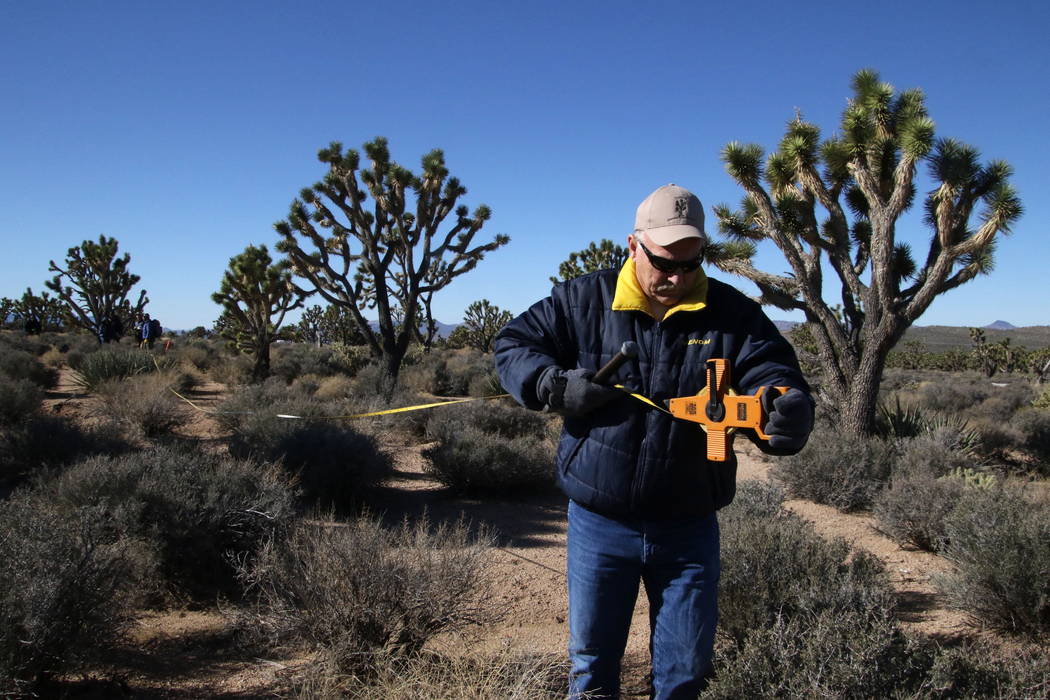

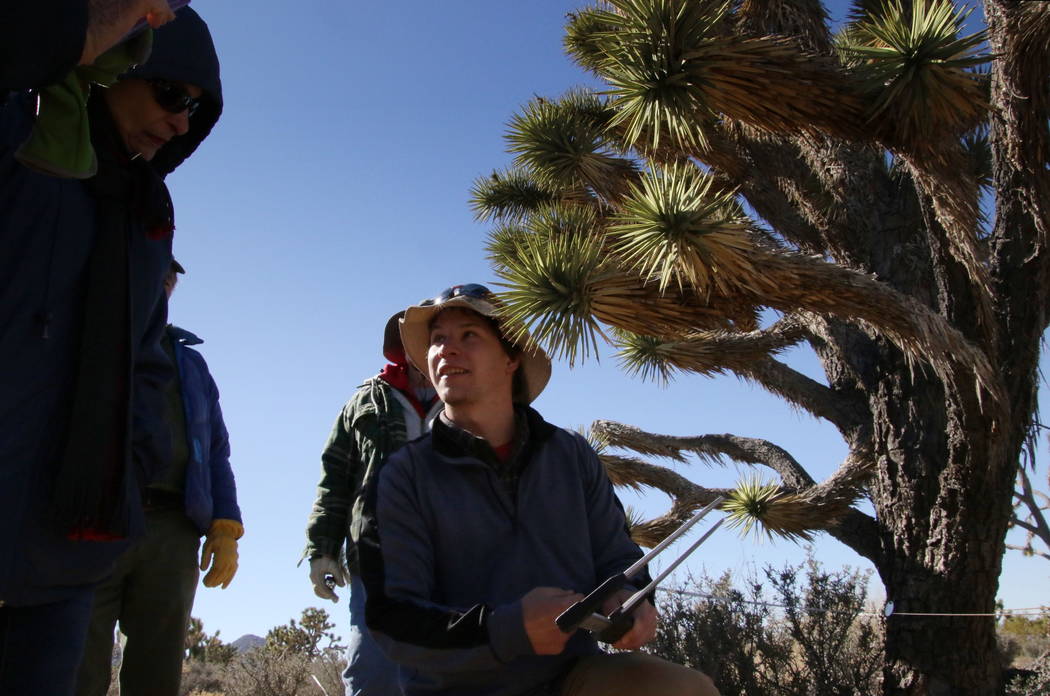
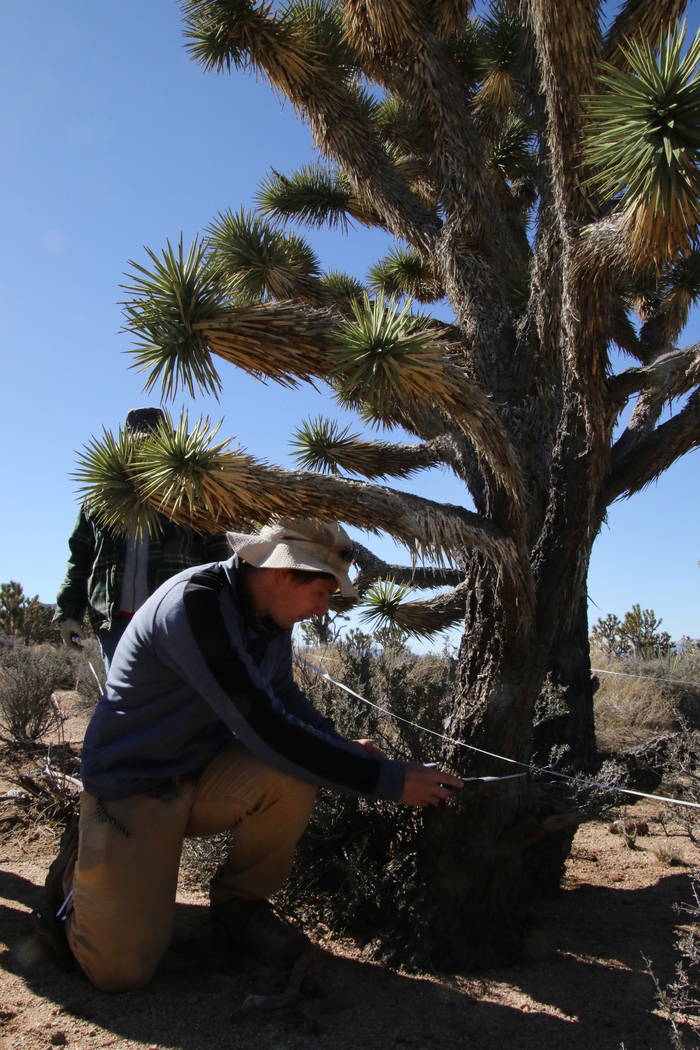
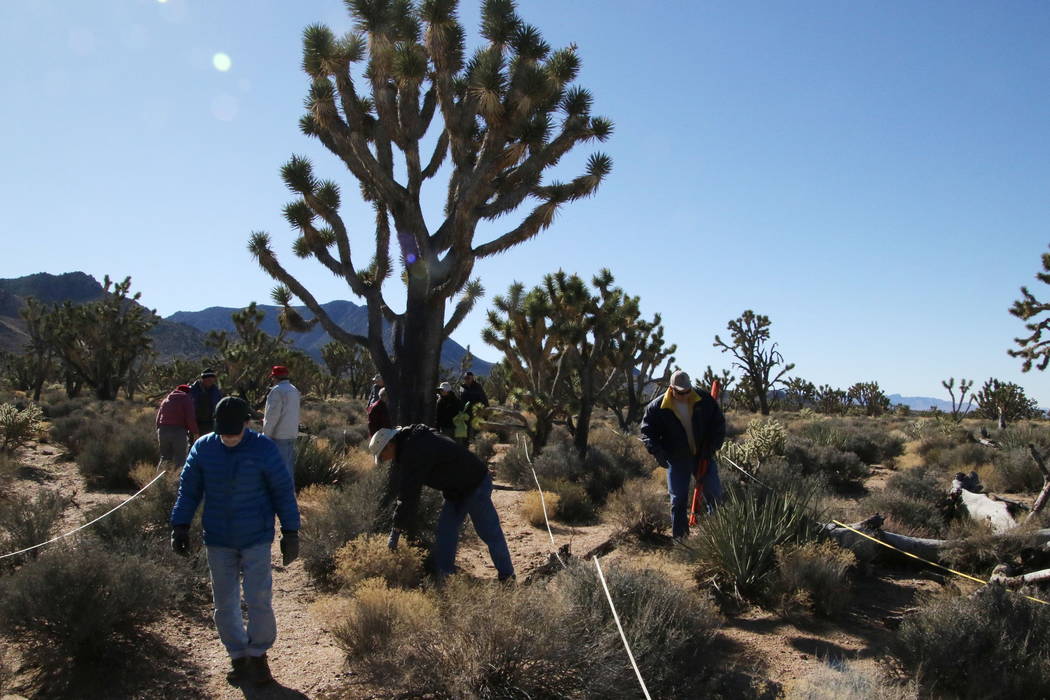
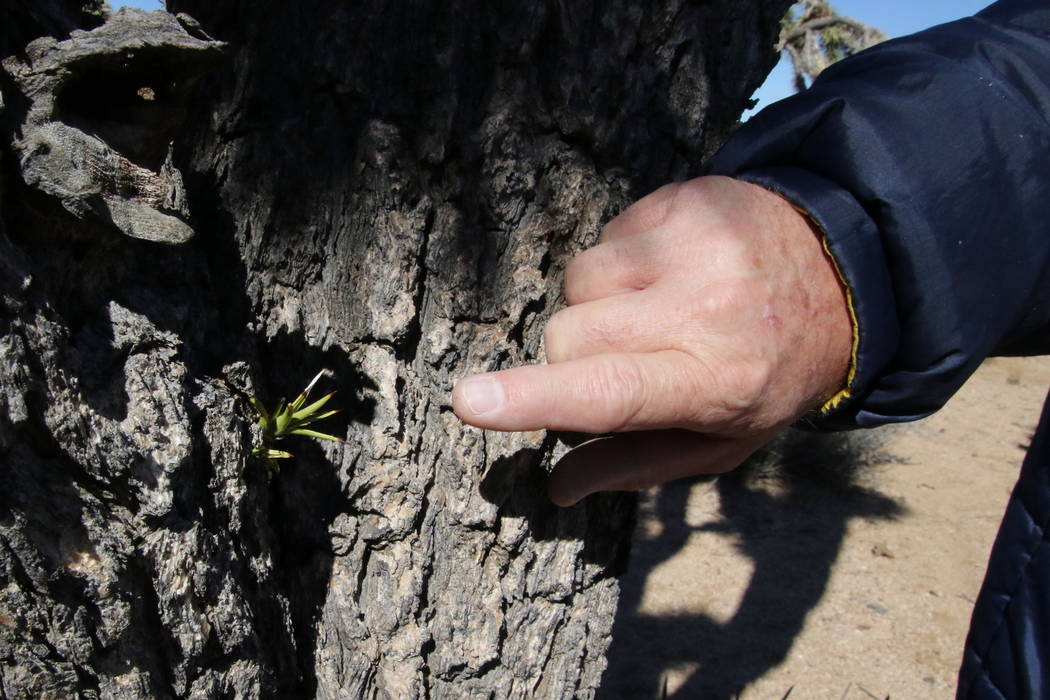
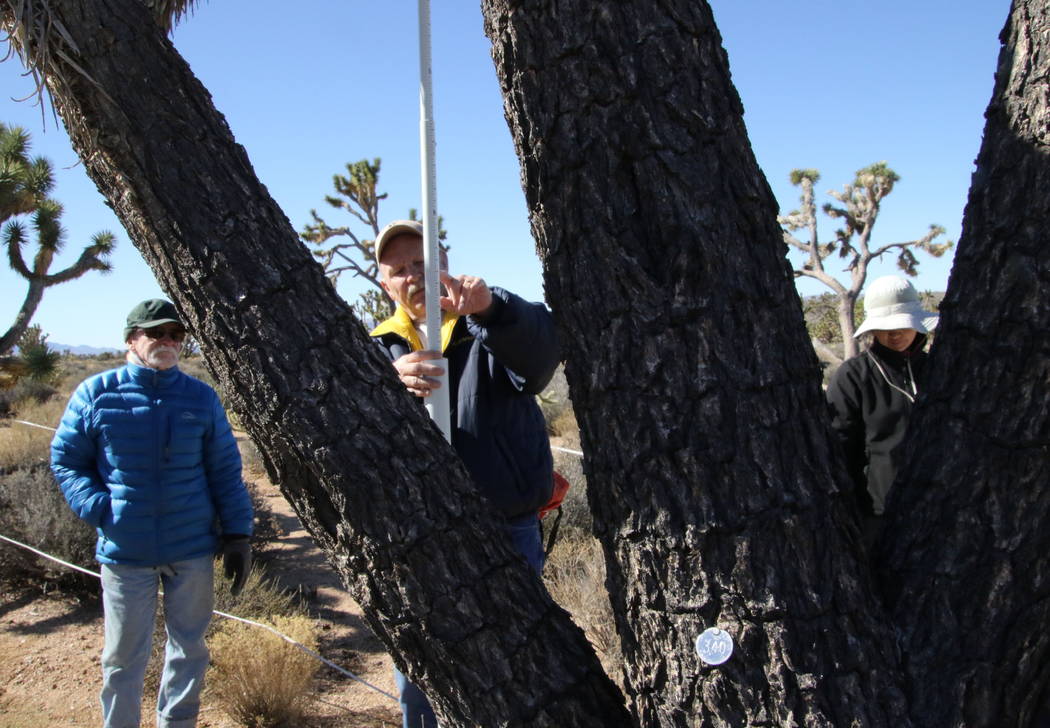

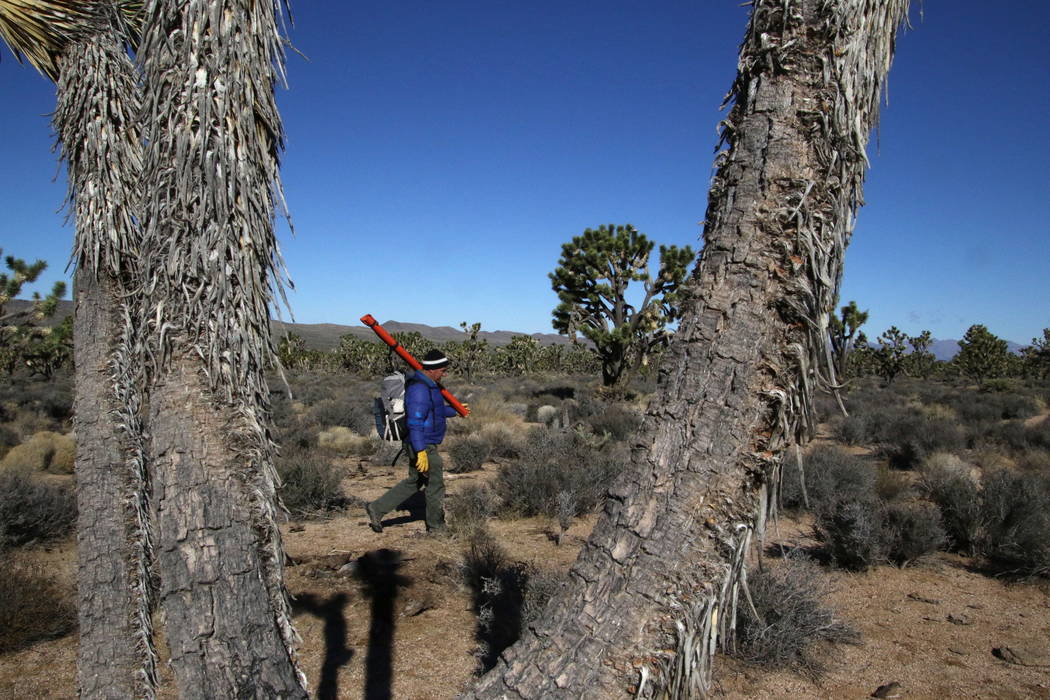
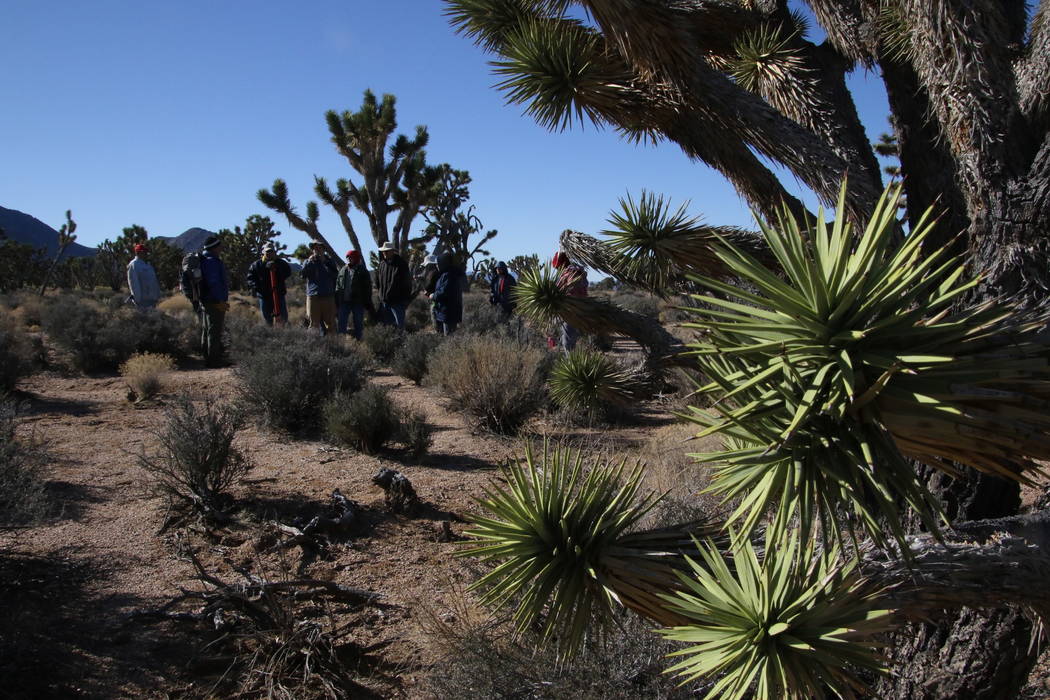
MEADVIEW, Ariz. — They are enduring symbols of the vast Mojave Desert, but Joshua trees don’t grow everywhere.
Even here in the Grapevine Mesa Joshua Tree Forest, a National Natural Landmark since 1967, you can see where the trees thin out and stop as the land rises sharply to the east.
Now a team of researchers has come up with an innovative way to determine exactly where the trees live and where they might live in the future.
As it turns out, the distinctive spiny plants can be spotted from orbit and counted with a computer screen.
“You can see Joshua trees with Google Earth,” said Todd Esque, a Henderson-based ecologist with the U.S. Geological Survey. “At least you can see the big ones.”
Using satellite and aerial imagery already widely available on the internet, Esque and company hope to compile landscape-scale data on the presence and absence of Joshua trees across their native range in California, Nevada, Arizona and Utah.
The resulting distribution map could be used to identify populations worthy of further study or protection and help trace the impacts of climate change on one of the Mojave’s keystone species.
Seeking ‘citizen scientists’
Esque described the process during an outing Tuesday with the Friends of the Arizona Joshua Tree Forest, a volunteer group devoted to preserving the nationally recognized stand of trees in Mohave County, Arizona, about 115 miles southeast of Las Vegas.
He said researchers will need to recruit an army of volunteer “citizen scientists” to help map the entire desert.
“It seems silly to think we could look at every square kilometer” of the Mojave Desert, Esque said, but it can be done if the work is spread out among enough online collaborators.
He said the work seems ideally suited to, say, high school science classes or volunteer groups like the Friends.
The effort is being organized by the Joshua Tree Genome Project, an association of government and university researchers working to understand and protect the species. It comes as the U.S. Fish and Wildlife Service considers whether to add the Joshua tree to the endangered species list based on climate change models predicting severe declines in its population over the next century.
Ironically, the outlook seems particularly bleak in parts of Joshua Tree National Park, where Esque said there appear to be lots of giant old trees but almost no younger plants growing in to replace them. “That’s what you don’t want to see,” he said.
Arizona’s Grapevine Mesa Joshua Tree Forest is in far better shape by comparison. “We know we have a fairly young population that is robust, and we know that by working with this group here,” Esque said of the volunteers who turned out to work in the forest on Tuesday.
Jenny Lea Cobb said she and her fellow Friends aren’t just looking after the trees for their own benefit.
‘Once it’s gone, it’s gone’
“You probably all have grandkids — a lot of you do — and you want something left for them to enjoy,” she told the group before Tuesday’s outing. “Once it’s gone, it’s gone.”
The researchers and volunteers spent the day setting up a 50-by-50-meter scientific plot where they counted and measured all the Joshua trees.
Esque said the plot will be surveyed again annually for the next three years and then once every three to five years after that to assess the health and growth rate of the trees and check for new seedlings.
Ideally, Esque said, he’d like to establish as many as 20 such plots at various elevations throughout the forest, but only if he has enough professionals and citizen scientists available to properly monitor that much real estate.
Across its range, Joshua trees seem to be spreading north and into higher elevations, though researchers don’t know enough yet to say with certainty that the species is on the move as a result of global warming. “It takes mountains of data to say something significant that stands up to scientific scrutiny,” Esque explained.
Right now, the desert around Meadview represents the northeastern edge of the plant’s range, but that could change. Already, some small Joshua trees have been found on top of the cliffs to the east of the forest.
“If the climate keeps warming, we may see them climb up on that mesa and take a run along the southern edge of the Grand Canyon,” Esque said.
Just don’t sit around staring at your computer screen and waiting for it to happen. He said changes like that tend to unfold over hundreds if not thousands of years.
Contact Henry Brean at hbrean@reviewjournal.com or 702-383-0350. Follow @RefriedBrean on Twitter.
Slow to arm themselves
As with a lot of desert plants, studying Joshua trees requires patience.
According to ecologist Todd Esque from the U.S. Geological Survey, the tall, spiny members of the asparagus family average just over one inch of growth per year but might not increase in size at all during prolonged dry spells.
Because the trunk lacks annual growth rings, it’s difficult to determine the age of a Joshua tree, but individuals can live for several hundred years.
It can take 70 years before a Joshua tree flowers and produces seeds for the first time.
For pollination, it relies on a single, highly specialized variety of yucca moth so closely linked to the Joshua tree through evolution that the two species could not survive without one another.













